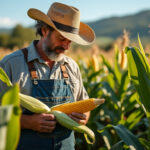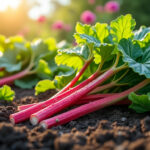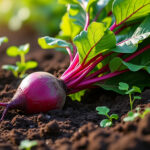The delicate and fragrant honeysuckle plant has long adorned gardens across the country, boasting beautiful tubular flowers in vibrant shades. These versatile plants come in climbing and shrub varieties, offering numerous design possibilities for gardens of all sizes. However, to maintain the health and beauty of your honeysuckle, understanding the right pruning techniques is essential. This comprehensive guide delves deep into the art of honeysuckle pruning, detailing the best time to prune for optimal growth, the methods to use, and the various factors that influence pruning schedules. Whether you are an expert or a novice, you’ll find critical insights that will guide you on your gardening journey.
- Understanding Honeysuckle Types
- Optimal Timing for Pruning Honeysuckle
- Pruning Techniques and Tools
- Maintenance and Growth Strategies for Lush Honeysuckle
Understanding Honeysuckle Types
Before you grab your GardenTools, it’s vital to distinguish between the two primary types of honeysuckle: the climbing honeysuckle and the shrub honeysuckle. Both varieties require different care and pruning approaches, which can greatly influence their health and flowering potential.
Climbing Honeysuckle
The climbing honeysuckle is often seen gracefully winding its way around fences and walls, adorned with its striking flowers. These plants typically bloom in one of two ways:
- Early Bloomers: If your climbing honeysuckle flowers in early summer, it’s best to prune right after it finishes blooming. This ensures that the plant retains its vigor and can focus on new growth throughout the season.
- Late Bloomers: For those that flower later in the summer, pruning should be postponed until spring. It is crucial to allow for the formation of buds in the previous season.
Shrub Honeysuckle
Shrub honeysuckle, on the other hand, requires a different approach. After the flowering period, typically in spring or summer, it’s time to prune. Only light maintenance is needed during other times to maintain an attractive shape.
In both cases, performing any hard pruning should be scheduled during late winter when the plant is dormant.
Optimal Timing for Pruning Honeysuckle
Timing is everything in gardening, and honeysuckle is no exception. Pruning at the right moment maximizes growth and flowering potential, so it’s essential to consider several factors, including the type of honeysuckle and its growth pattern.
Deciduous vs. Evergreen Honeysuckle
Another important aspect is determining whether your honeysuckle is deciduous or evergreen:
- Deciduous Honeysuckle: These plants lose their leaves in the fall and are best pruned while dormant in late winter or early spring, just before the growth cycle resumes. This method enhances their robust growth and flowering schedule.
- Evergreen Honeysuckle: These varieties keep their foliage throughout the year. Light pruning can occur in late summer or early autumn after blooming. Generally, evergreen honeysuckles may require less frequent pruning compared to their deciduous counterparts.
Proper timing takes advantage of natural growth cycles. For maximum blooms next season, remember that severe pruning during the growing season can often lead to reduced flowering.
When is the best time to plant grass seed for a lush lawn?
Pruning Techniques and Tools
With the types and timing established, the next step is learning the best techniques for pruning honeysuckle. Utilizing appropriate tools is just as critical in ensuring you achieve the desired results.
Essential Pruning Tools
Investing in quality tools can make a world of difference. Here are some essentials for the GreenThumb gardener:
- Sharp Pruning Shears: For small and delicate snips on twigs and foliage.
- Loppers: Ideal for thicker branches up to 2 inches in diameter.
- Hand Saw or Reciprocating Saw: For larger cuts when needing to remove substantial branches.
- Sanitizing Solution: Essential for cleaning tools between plants, particularly when dealing with diseased areas.
Pruning Technique Tips
When pruning, the method used can significantly impact the plant’s recovery and growth:
- Always cut at a slight angle to encourage water drainage away from the wound.
- Favor cuts that leave a smooth edge rather than ragged stubs which can invite disease.
- Remove no more than 1/3 of the plant at a time to avoid stressing the honeysuckle.
- In cases of severe overgrowth, cut back hard during the dormant season but note this may reduce blooms in the following year.
Cutting back honeysuckle appropriately not only promotes healthy growth but also nurtures a thriving, lush honeysuckle environment. Keeping plants well managed ensures your efforts yield the bursting blooms of spring and summer.
Maintenance and Growth Strategies for Lush Honeysuckle
To foster a vibrant honeysuckle, regular maintenance goes hand in hand with strategic pruning. GrowthGuru experts agree that the right care can elevate your garden to stunning heights.
Here’s a breakdown of essential practices:
- Regular Monitoring: Keep a close eye on your honeysuckle’s health, looking for signs of disease or injury.
- Annual Pruning: Whether light or severe, perform yearly pruning following the guidelines based on the specific variety.
- Soil Care: Ensure the soil is rich in nutrients and well-drained; honeysuckle thrives in conditions that are conducive to growth.
- Pest Management: Establish a plan for dealing with pests that may threaten the vitality of your honeysuckle.
Watering and Fertilizing Strategies
A solid watering and fertilizing schedule is vital. Honeysuckle requires moderate moisture, and too much can lead to root issues:
| Watering Frequency | Fertilizing Schedule |
|---|---|
| Once a week during dry periods | Once in early spring with slow-release organic fertilizer |
| Adjust frequency based on weather and soil conditions | Supplement during active growth if needed |
With meticulous care and attention to seasonal changes, honeysuckle can flourish in any garden. Watching the transformation into a stunning floral display each season will reaffirm the value of your efforts.
FAQ
When is the best time to prune honeysuckle?
The ideal time for pruning honeysuckle varies; typically after flowering in late summer or early autumn for climbing varieties, while shrub varieties should be pruned in spring after they bloom.
How much can I prune my honeysuckle plant at once?
It’s recommended not to cut more than 1/3 of healthy branches at one time. However, in cases of severe overgrowth, you may need to cut back hard during the dormant season.
What tools do I need for pruning honeysuckle?
Essential tools include sharp pruning shears, loppers, a hand saw, and a sanitizing solution for cleaning. Using sharp, clean tools ensures healthy cuts that promote recovery.
Should I fertilize my honeysuckle?
Yes, regular fertilization in early spring with organic slow-release fertilizer will promote healthy growth. Be cautious of over-fertilizing, which can lead to excessive foliage and few blooms.
What are the signs of a diseased honeysuckle plant?
Signs include wilting, yellowing leaves, stunted growth, or an unusual amount of dead branches. Ensuring you monitor your plant’s health can catch these issues early for remediation.















